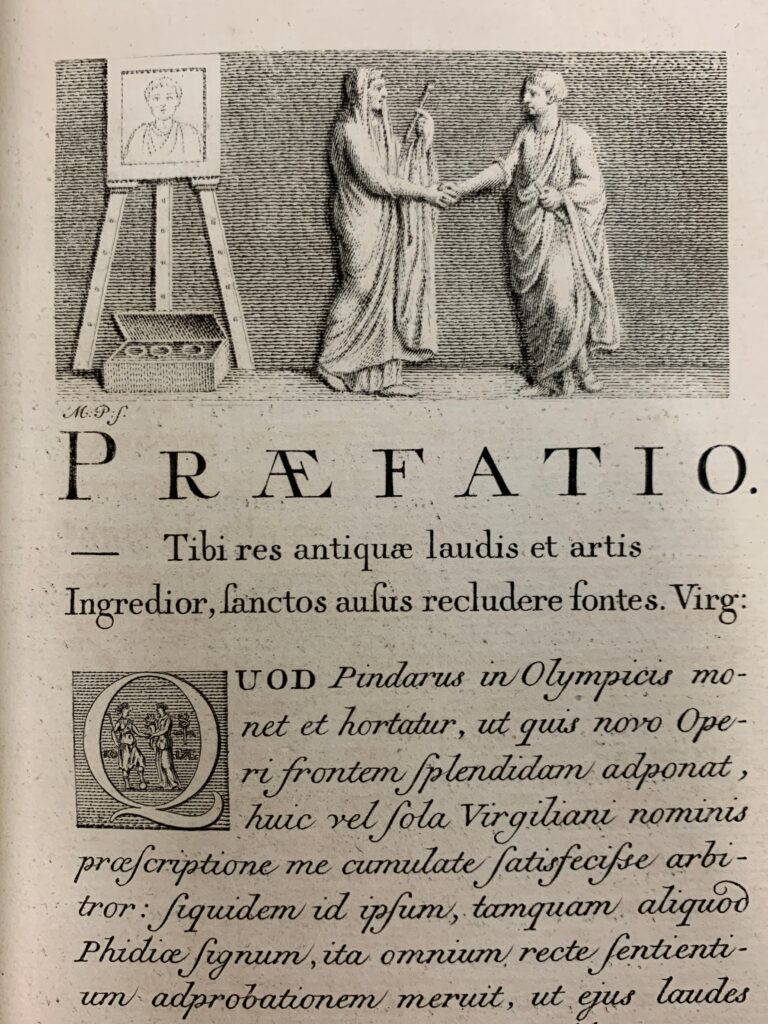By Emma Campbell, Classical Civilizations ’24, Spring 2023 Rare Books Intern
This semester I had the great pleasure of holding an internship with the Mahn Center for Archives and Special Collections under the guidance of Dr. Miriam Intrator. I worked specifically with the Classics Collection in the Rare Books department and created a digital exhibit of what I learned: From Athens (Greece) to Athens (Ohio): Traveling Through Time and Place With the Classics.
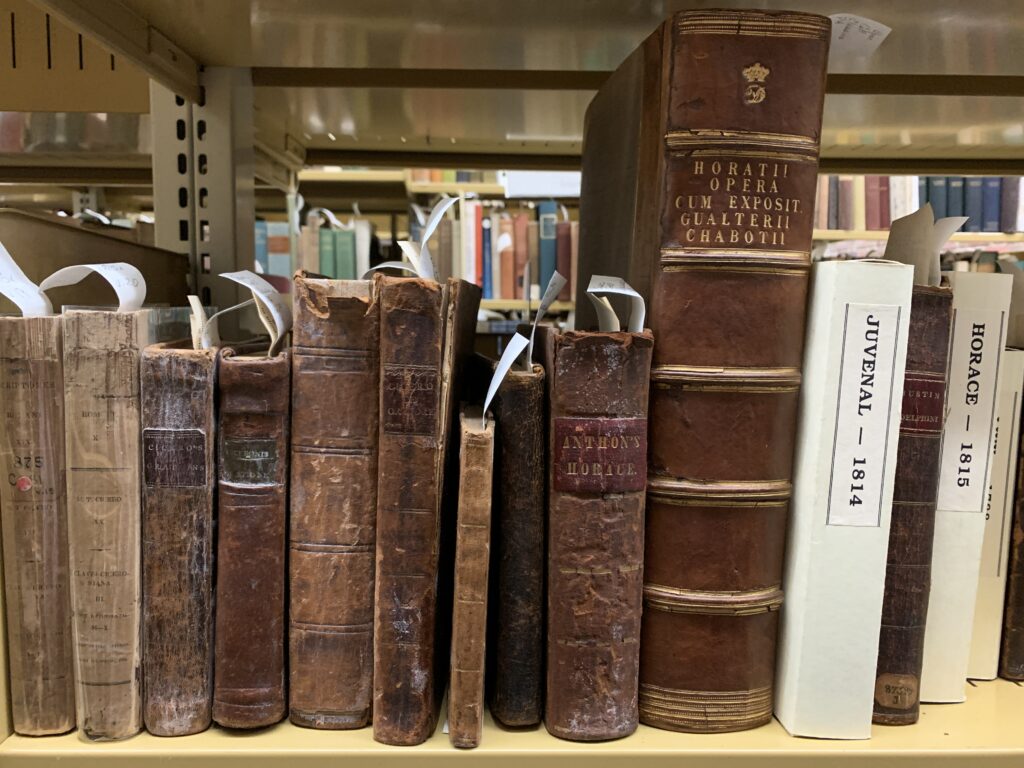
As a Classics student myself here at Ohio University, this was an incredible experience. A lot of the rare books that I encountered during my internship were ancient texts that I have read for my own classics education. This made it even more special to be doing this work and made me feel extra connected to the people whose books I was looking through. I loved working through these books knowing that I, a modern classics student, was reading and learning about the same things that the previous owners of these books had studied almost 200 years before me.
My main goal with this project was to learn about the people who previously studied the classics through these books, and about the history of the field at Ohio University more generally. I knew going into this that I would most likely come across a lot of signatures from the time period that most of these books were from (1700s-early 1900s), so I really wanted to center my exhibit around those previous owners and how they were connected to the world of classics. I was also very excited to dabble in creating an exhibit. With my classic’s degree, I am planning on pursuing a career as a museum curator, so this experience was incredibly beneficial for me to learn about the job I am striving for.
I began my project by looking through every book in the collection and documenting everything I found on a spreadsheet. I have worked with spreadsheets a few times before, but not to this extent, and it was a really beneficial learning experience that I was not expecting. It was also very useful because it allowed me to have all my information in one place when I needed to go back to get it for the creation of my exhibit.
As I was flipping through the books, I was also doing some light research on the signatures that I was finding. I kept track of this information in a word document, so I became very familiar with Microsoft Office throughout this semester. I also became very familiar with the Ohio University Libraries’ ALICE catalog as I was checking it regularly to make sure each book I went through was documented correctly and could be found easily by keyword search or call number.
The next step I took was really diving into research about the names I had found. Unfortunately, a lot of the names came up inconclusive because they were very common names or because there were too many people attributed to that name, and I could not definitively say which one the book had belonged to. I did find and identify a few very interesting names and people, though. For example, the second name that I found was Oric Bates, who it turns out was a famous archaeologist who worked for Harvard University and went on regular digs to North Africa, often Ancient Egypt. I researched each name I found and kept track of all of the information I found and the various websites where I found it.
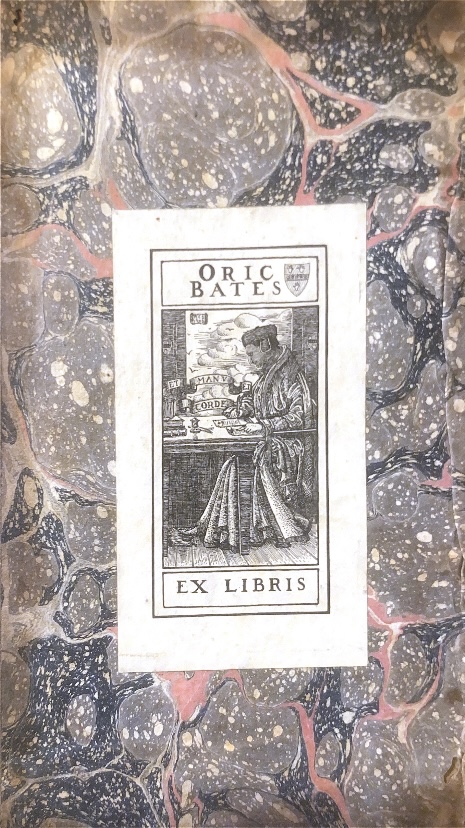
The next part of this project was definitely the most difficult. I now had to somehow narrow down which books I was going to include in my final exhibit. There are 81 total books in the Classics Collection, and each one is so special to me, so it was really hard to pick between them all. They each have something interesting about them that I wanted to include, but I managed to narrow it down to a final 8 books. I based my selection on whether they had a good, legible signature and if I could find any information on the owner that related back to classics, Ohio University, or something to do with the human experience in classics education. Not all of the 8 books have all of these characteristics, but they all have at least one, and a few other unique features that I decided could not be left out.
Once I had my 8 books picked, now came time to put together the actual exhibit. This exhibit is a digital one, so I really wanted to make sure to include all the elements I could and make it as interactive as possible. After looking through all of the options I decided to go with the StoryMaps platform. This would allow me to map where I had learned either the owners had lived, or where the book was before it came here to us at Ohio University. This platform also allowed me to include a lot of pictures of the books that related back to what I was planning on saying about them.
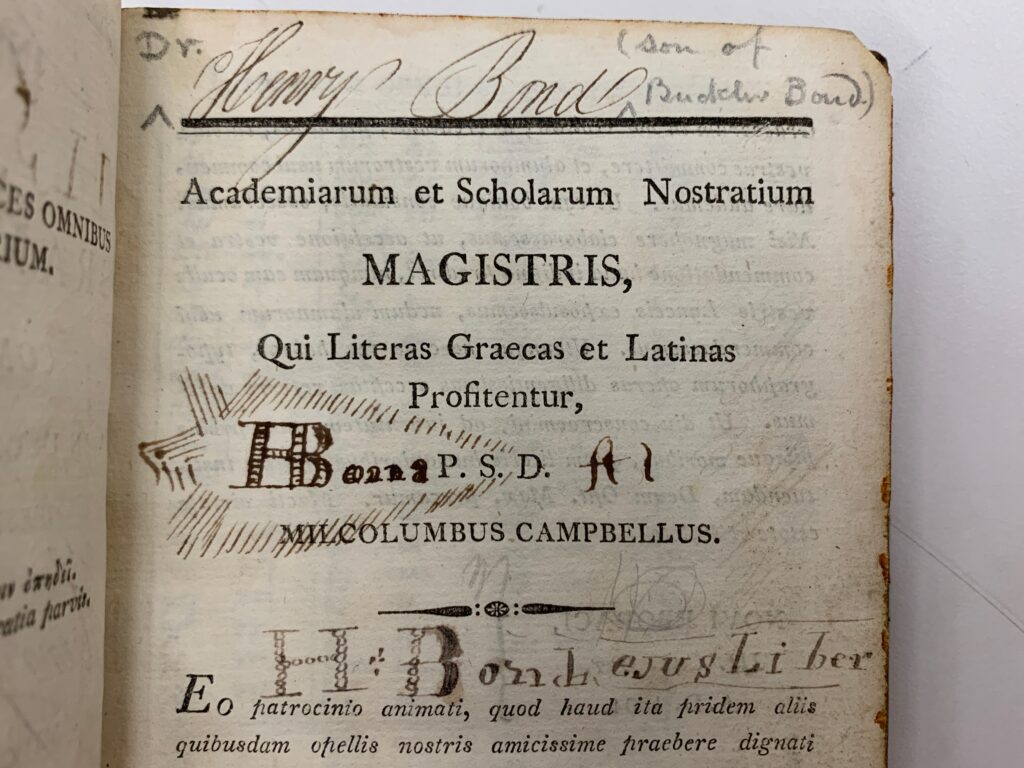
The next phase of the project was the writing. When I was writing a description for each one of these books, I had two things that I definitely wanted to include. I wanted to give a general overview of what the book was about and why someone studying classics would have read it, and I wanted to write a short paragraph about the previous owner/where the book used to live. I felt that having both pieces of information would really portray back to the reader what I was trying to say about this collection, specifically these 8 books.
Pictures were also something I had to orchestrate. I went back through all of my notes and picked which pages I wanted to include since, unfortunately, I could not include all of the notes and drawings that I wanted to for each book. I also decided to include the title page of each book to make the sets of pictures more easily identifiable since most of the titles are in Latin or Greek. After putting together the text, pictures, and locating each book on the map, my exhibit was complete. It was extremely gratifying to see my work from the semester finally come together in a final exhibit that I am pretty proud of.
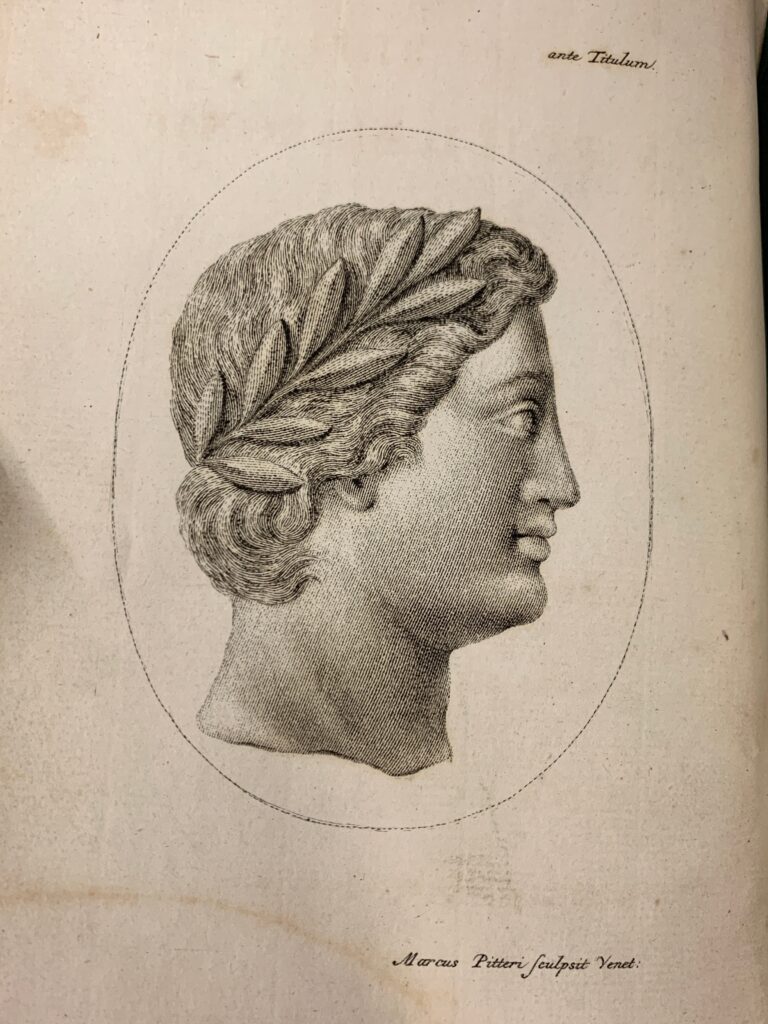
My favorite part of this project by far was bringing back the people of the signatures I found. It has been such an honor to put them back in the spotlight after spending so much time lost on a shelf. I feel deeply connected to these people and I am so thankful that I was the one that got to reintroduce them to the world. I feel that it is very important to keep Classics as a field of study alive, and I feel like I achieved this by bringing these people and their books back into the light. I could not have done any of this without the wonderful guidance of Dr. Miriam Intrator and the rest of the staff at the Mahn Center, who all welcomed me with open arms.
